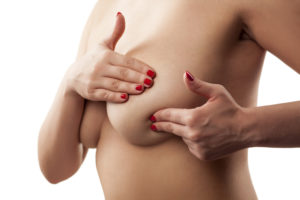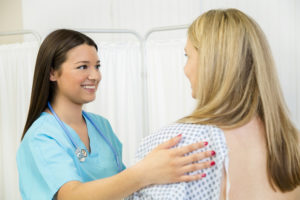Breast Cancer Awareness

With October as National Breast Cancer Awareness Month, this is an ideal time to educate everyone about breast cancer, its symptoms, and available treatment options.
Story by Ann Butenas
For nearly forty years now during the month of October, individuals around the world have shown their support for those who have been affected by breast cancer. As enhanced awareness is raised about this disease, extensive research continues on full throttle and vital support is extended to those who are struggling with this challenge. This is the time to educate everyone about breast cancer, the importance of early detection, and receiving timely, high-quality care.
Breast cancer can affect anyone, anywhere, and at any time. What is critically important is to know and understand the signs and symptoms; understand your risk; and know what is normal to you so when there are changes in your breast, you can respond quickly and accordingly.
But progress is still needed on all levels. Fortunately, advances in research have opened the door to new therapies and treatments that have improved outcomes for countless individuals. No longer do we have to rely on the outdated one-size-fits-all approach. Research brings hope and more options for patients, which is especially critical when treatments fail to work.

The Statistics of Breast Cancer
- Breast cancer is the most commonly diagnosed cancer in women in the United States. It became the most common cancer globally in 2021.
- The two greatest risk factors of breast cancer are being female and becoming older.
- One in eight women in the United States will develop invasive breast cancer during her lifetime.
- Roughly 2,710 cases are expected to be diagnosed in men in 2022.
- A man’s lifetime risk of breast cancer is about one in 833.
- Nearly 43,250 women in the United States are expected to die from breast cancer in 2022. This is higher than those for any other type of cancer, except lung cancer.
- A women’s risk of getting breast cancer doubles if she has a first-degree relative who has been diagnosed with it.
- About 85% of breast cancers found in women have no family history of the disease.
Breast Cancer Symptoms 
When it comes to symptoms of breast cancer, people vary in how they present. Some might not have any symptoms at all. However, some of the early warning signs include:
- A lump in the underarm or in the breast.
- Dimpling or any irritation of the breast skin.
- Swelling or thickening of a part of the breast.
- Pain in the nipple area.
- Pulling in of the nipple.
- A nipple discharge, other than milk, that may include blood.
- A change in the size or shape of the breast.
- Pain in any part of the breast.
It is important to note that these symptoms can present with other conditions and may not necessarily be indicative of breast cancer. However, if you have any signs or symptoms, it is best to see your doctor immediately.
Are You at Risk for Breast Cancer? 
It is essential to have a discussion with your doctor about your family history and how that history can impact your own personal health and risk for breast cancer. Together with your doctor, you can prepare a plan to monitor any symptoms and create a plan of action if needed.
Ways to Support Breast Cancer Awareness Month and Beyond
Get Screened:
Having an annual mammogram at age 40 for individuals of average risk is recommended. Mammograms can help detect any signs of the disease, allowing you to get it treated early in order to help save your life.
Embrace a Healthy Lifestyle:
When you live a healthy lifestyle, you can potentially reduce your risk of some cancers and even other health conditions. While not every action you take can definitely lower your risk of breast cancer, these are good habits to adopt:
- Exercise regularly.
- Maintain a healthy weight.
- Limit sugar intake.
- Avoid alcohol.
- Quit smoking.
- Limit or avoid highly processed foods.
- Consume about three cups of vegetables a day and two cups of fruit a day.
- Opt for 100% whole grain foods.
Take Action: 
Donate money to help support continued research. The hope is that by the year 2050, those diagnosed with breast cancer will live and will be supported to continue to live well.
Participate in fundraising by hosting a fundraiser of your own. Have a bake sale. Host a trivia night. Coordinate a pickleball challenge or even have a fashion show. The sky is the limit.
Get involved. There are so many ways you can get involved during this important month and beyond. Volunteer with a charity that supports breast cancer initiatives. Plan your own event. Participate in a golf tournament that is raising funds for breast cancer. Or just wear pink throughout the month.
No matter what we do in the month of October and throughout the year, the more we raise awareness about breast cancer, the better prepared we are to arm ourselves for battle should this disease ever knock upon our door.
Sources: breastcancer.org, breastcancernow.org, komen.org, cdc.gov.





